Living here in Pilar, Bataan with the ocean practically at my doorstep, I've become obsessed with making this incredibly fresh seaweed salad. There's something exciting about walking down to the shore early in the morning, collecting my own guso while the fishermen are bringing in their catch, then heading home to whip up this simple but absolutely delicious dish.
My neighbor Ate Ellen taught me this recipe years ago, and I was skeptical at first. Seaweed salad? But one bite of that perfect balance of sour, salty, and fresh ocean flavor completely won me over. Now it's my go-to whenever I want something light, healthy, and bursting with that clean taste of the sea.
The best part? It takes just 30 minutes from start to finish, and it actually gets better as it sits!
What Is Guso?
Guso is a type of edible seaweed scientifically known as Eucheuma, which grows abundantly in the coastal waters of the Philippines, particularly in the Visayas and Mindanao regions.
This remarkable sea vegetable can vary in color from bright green to purple and brown, and is prized for its naturally crunchy texture that's often compared to cucumber. When prepared, guso maintains its satisfying crunch while absorbing the flavors of whatever dressing it's paired with.
Jump to:
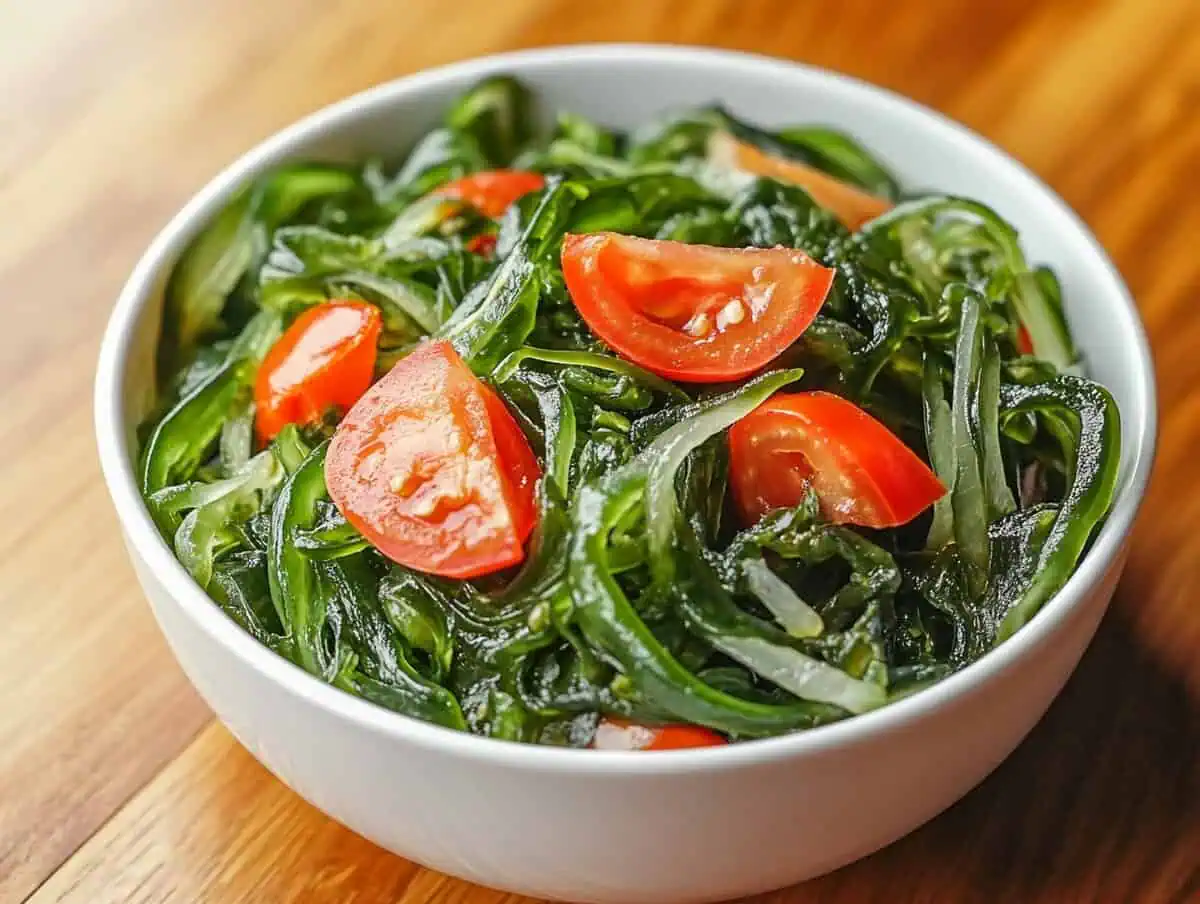
Why You'll Love This Recipe
This refreshing Filipino seaweed salad is a perfect balance of tangy, savory, and slightly sweet flavors that will awaken your taste buds. The crisp texture of fresh guso combined with the aromatic dressing creates a light yet satisfying dish that's perfect as an appetizer or side dish.
It's incredibly healthy, packed with minerals from the sea, and requires no cooking at all. The best part? It gets better as it sits, making it an ideal make-ahead dish for gatherings or meal prep.
Ingredients
- ½ pound fresh seaweed (guso), thoroughly rinsed
- 1 large tomato, cored and chopped
- 1 medium red onion, minced
- ½ cup white vinegar
- 1 small knob fresh ginger, peeled and minced
- Pinch of freshly ground black pepper
- Pinch of sugar
- Salt to taste
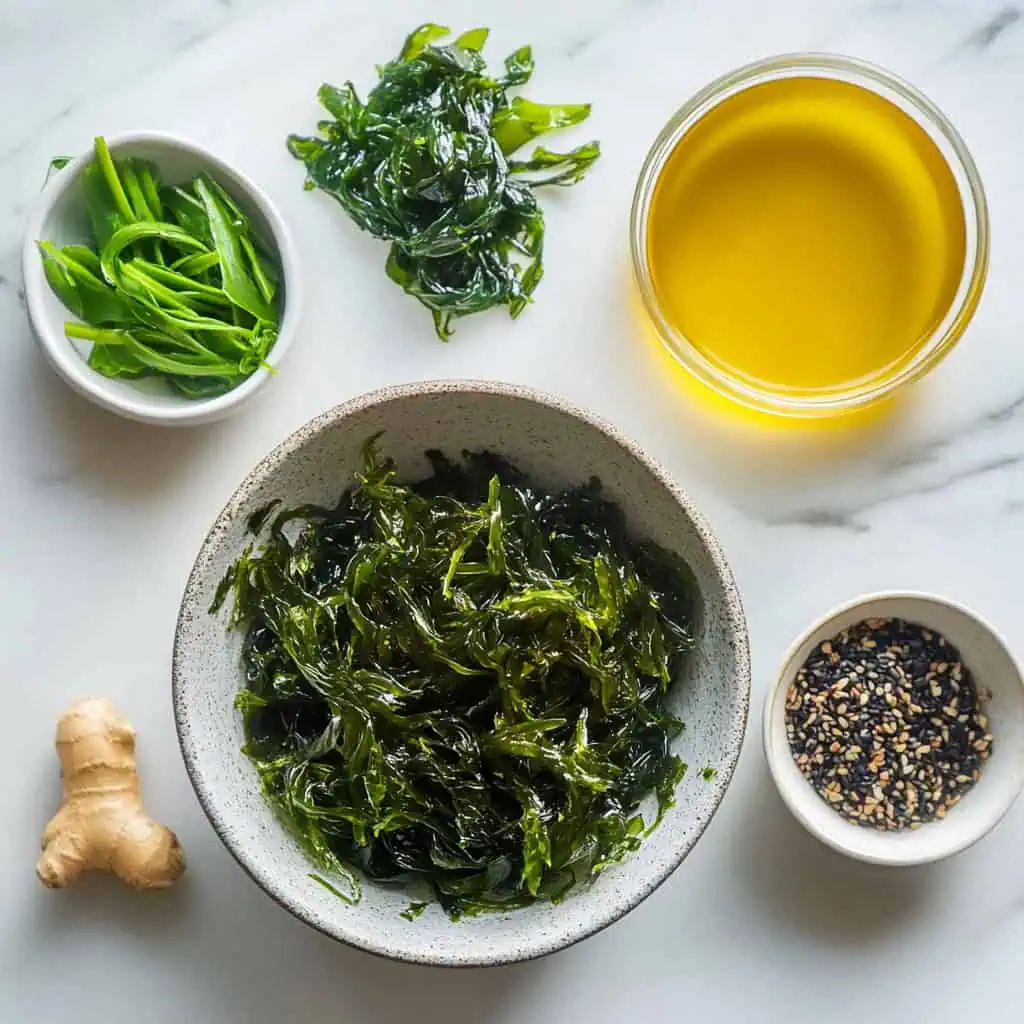
These carefully selected ingredients work together to create the perfect Filipino seaweed salad. The fresh guso provides a unique oceanic flavor and satisfying crunch, while the vinegar acts as both a flavor enhancer and natural preservative.
Red onion adds a sharp bite that mellows beautifully when marinated, and fresh ginger brings warmth and depth. The tomato contributes natural sweetness and acidity, while the sugar and pepper balance all the flavors harmoniously.
Equipment
- Large mixing bowl - for marinating the dressing and combining all ingredients
- Sharp knife - for chopping tomatoes and mincing onion and ginger
- Cutting board - for safe and clean food preparation
- Fine mesh strainer - for thoroughly rinsing the seaweed
- Serving dish - for presenting the finished salad

How To Make
- Start by combining the vinegar, minced ginger, minced red onion, salt, freshly ground black pepper, and sugar in your large mixing bowl. Stir this dressing mixture thoroughly until all ingredients are well blended and the sugar has completely dissolved. Allow this aromatic base to sit and marinate for exactly 5 minutes, which gives the onion time to mellow and the flavors to meld together beautifully.
- After the initial marinating period, add the thoroughly rinsed seaweed and chopped tomato to the bowl with your prepared dressing. Gently but thoroughly stir all ingredients together until every piece of seaweed and tomato is well coated with the flavorful dressing. Let the entire mixture sit for an additional 10 minutes, allowing the seaweed to absorb the tangy flavors while maintaining its delightful crunch.
- Once the final marinating time is complete, transfer your Ensaladang Guso to a clean serving dish. The salad can be served immediately at room temperature or chilled in the refrigerator for 30 minutes before serving for an extra refreshing experience.

Tips from Lola's Kitchen
- Always rinse seaweed multiple times in cold water until the water runs clear - this removes excess salt and any sand particles
- Let the onion marinate in vinegar first to reduce its sharpness and create a more balanced flavor
- Chill your serving bowl in the freezer for 10 minutes before plating for an extra-cold presentation
- Add a splash of calamansi juice if available for an authentic Filipino citrus note
- Serve within 2 hours of preparation for the best texture and freshness
- Garnish with fresh pineapple chunks for a tropical twist that complements the oceanic flavors perfectly
Substitutions
- No fresh ginger? Use ¼ teaspoon ground ginger, but add it slowly as it's more concentrated
- Can't find guso? Substitute with wakame seaweed or even fresh kelp, though the texture will be slightly different
- White vinegar too harsh? Try rice vinegar or apple cider vinegar for a milder tang
- No red onion? White onion works fine, or try shallots for a more delicate flavor
- Want more vegetables? Add julienned cucumber or radish for extra crunch
- Need it sweeter? Replace sugar with honey or brown sugar for deeper sweetness
Troubleshooting
- Seaweed tastes too salty? Rinse it longer and soak in fresh water for 5 minutes before final rinse
- Dressing too acidic? Add another pinch of sugar or a bit more salt to balance
- Onion too strong? Soak minced onion in cold water for 5 minutes before adding to vinegar
- Ginger overpowering? Start with half the amount next time - you can always add more
- Seaweed getting mushy? Don't over-marinate; 15 minutes total is the sweet spot
- Not flavorful enough? Let it sit longer in the fridge - flavors develop over time
Storage & Reheating
- Store covered in refrigerator for up to 2 days maximum for food safety
- Best consumed within 24 hours for optimal texture and freshness
- Do not freeze as seaweed becomes mushy when thawed
- No reheating needed - always serve cold or at room temperature
- If storing overnight, drain excess liquid before serving to prevent sogginess
- Keep in airtight container to prevent absorption of other refrigerator odors
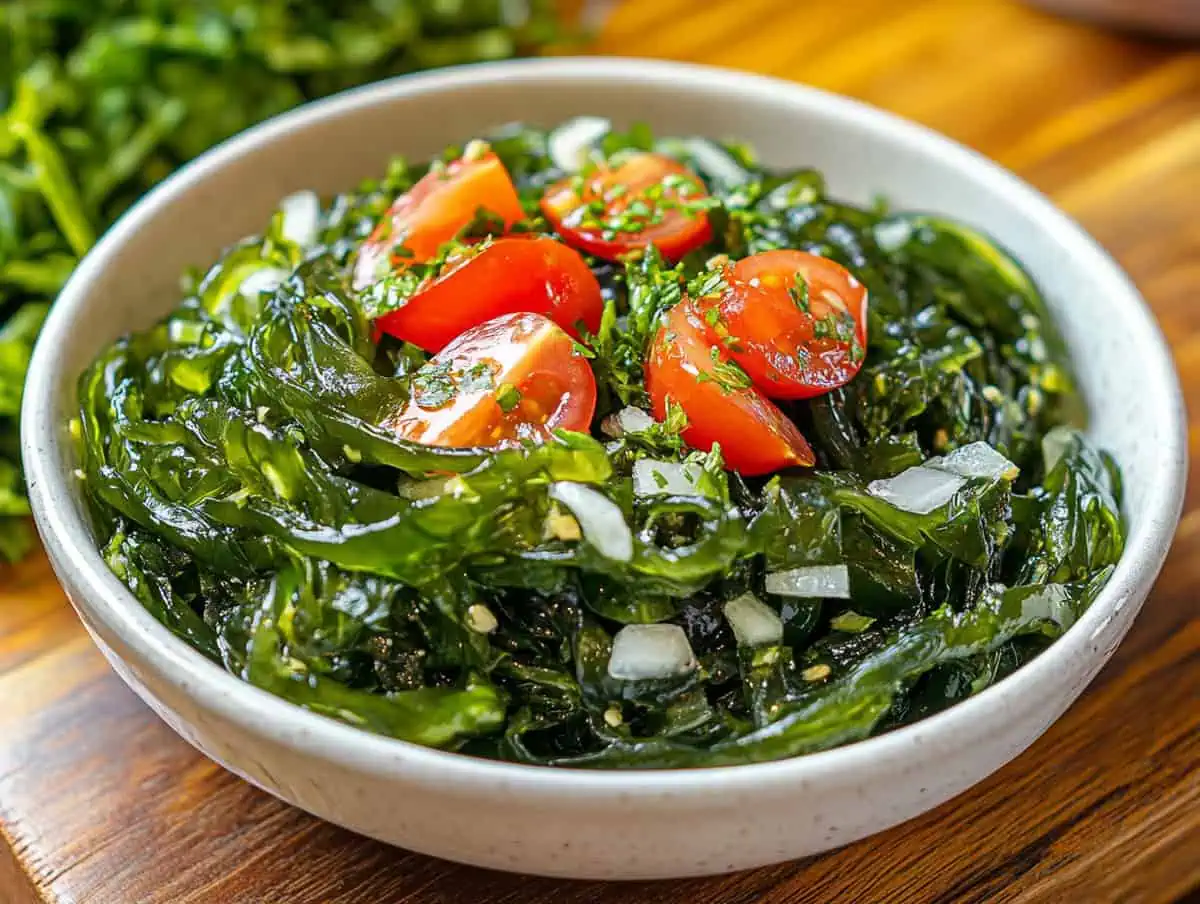
FAQ
Where can I buy guso seaweed?
Check Asian grocery stores, Filipino markets, or order online from specialty seafood suppliers
Can I make this ahead of time?
Yes, but it's best within 2-3 hours of preparation for ideal texture
Is this salad healthy?
Absolutely! Seaweed is rich in iodine, vitamins, and minerals while being very low in calories
Can I add other vegetables?
Yes, cucumber, bell peppers, or even mango work wonderfully
What dishes pair well with this salad?
Perfect with grilled fish, lechon, or any fried Filipino dishes
Can children eat this?
Yes, but you might want to reduce the ginger and onion for young palates
Is this gluten-free?
Yes, all ingredients are naturally gluten-free
Can I use dried seaweed?
Fresh is best, but if using dried, rehydrate according to package instructions first
Related
Looking for other recipes like this? Try these:
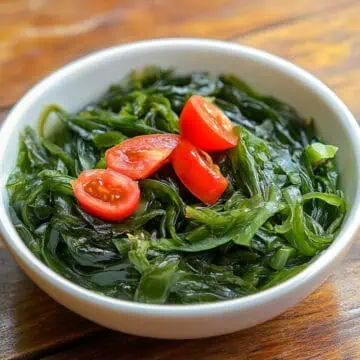
Ensaladang Guso (Filipino Seaweed Salad)
Ingredients
- ½ pound fresh seaweed guso, thoroughly rinsed
- 1 large tomato cored and chopped
- 1 medium red onion minced
- ½ cup white vinegar
- 1 small knob fresh ginger peeled and minced
- Pinch of freshly ground black pepper
- Pinch of sugar
- Salt to taste
Instructions
- Start by combining the vinegar, minced ginger, minced red onion, salt, freshly ground black pepper, and sugar in your large mixing bowl. Stir this dressing mixture thoroughly until all ingredients are well blended and the sugar has completely dissolved. Allow this aromatic base to sit and marinate for exactly 5 minutes, which gives the onion time to mellow and the flavors to meld together beautifully.
- After the initial marinating period, add the thoroughly rinsed seaweed and chopped tomato to the bowl with your prepared dressing. Gently but thoroughly stir all ingredients together until every piece of seaweed and tomato is well coated with the flavorful dressing. Let the entire mixture sit for an additional 10 minutes, allowing the seaweed to absorb the tangy flavors while maintaining its delightful crunch.
- Once the final marinating time is complete, transfer your Ensaladang Guso to a clean serving dish. The salad can be served immediately at room temperature or chilled in the refrigerator for 30 minutes before serving for an extra refreshing experience.
Tips from Lola's Kitchen
- Always rinse seaweed multiple times in cold water until the water runs clear - this removes excess salt and any sand particles
- Let the onion marinate in vinegar first to reduce its sharpness and create a more balanced flavor
- Chill your serving bowl in the freezer for 10 minutes before plating for an extra-cold presentation
- Add a splash of calamansi juice if available for an authentic Filipino citrus note
- Serve within 2 hours of preparation for the best texture and freshness
- Garnish with fresh pineapple chunks for a tropical twist that complements the oceanic flavors perfectly
The Story Behind Ensaladang Guso (Filipino Seaweed Salad)
Ensaladang Guso has deep roots in Filipino coastal culture, particularly in the Visayas and Mindanao regions where seaweed farming has been a way of life for centuries. The dish originated from the practical need of fishing communities to make use of the abundant seaweed that grew naturally in their waters. Long before seaweed became a commercial crop for carrageenan production, Filipino families were already enjoying guso as a nutritious and refreshing meal.
The traditional preparation method has remained largely unchanged since the Spanish colonial period, with historical records from the 1600s documenting how Visayan peoples would gather seaweed from beaches and prepare it in various ways. The acidic dressing using native vinegar not only enhanced the flavor but also served as a natural preservative in the tropical climate, making it a practical dish for coastal communities without refrigeration.
What makes Ensaladang Guso particularly special is how it represents the Filipino philosophy of maximizing natural resources. Coastal families developed this recipe as an affordable, healthy way to feed their families using ingredients that were literally at their doorstep. The addition of tomatoes and onions came later, likely influenced by Spanish and Chinese culinary traditions, but the core concept of marinated seaweed remained distinctly Filipino.
Today, while much of the Philippines' seaweed harvest is exported for industrial use, traditional dishes like Ensaladang Guso help preserve the cultural connection between Filipinos and their maritime heritage. This simple salad continues to be a beloved appetizer at family gatherings and a staple at local eateries, especially in coastal provinces where fresh guso is still readily available.
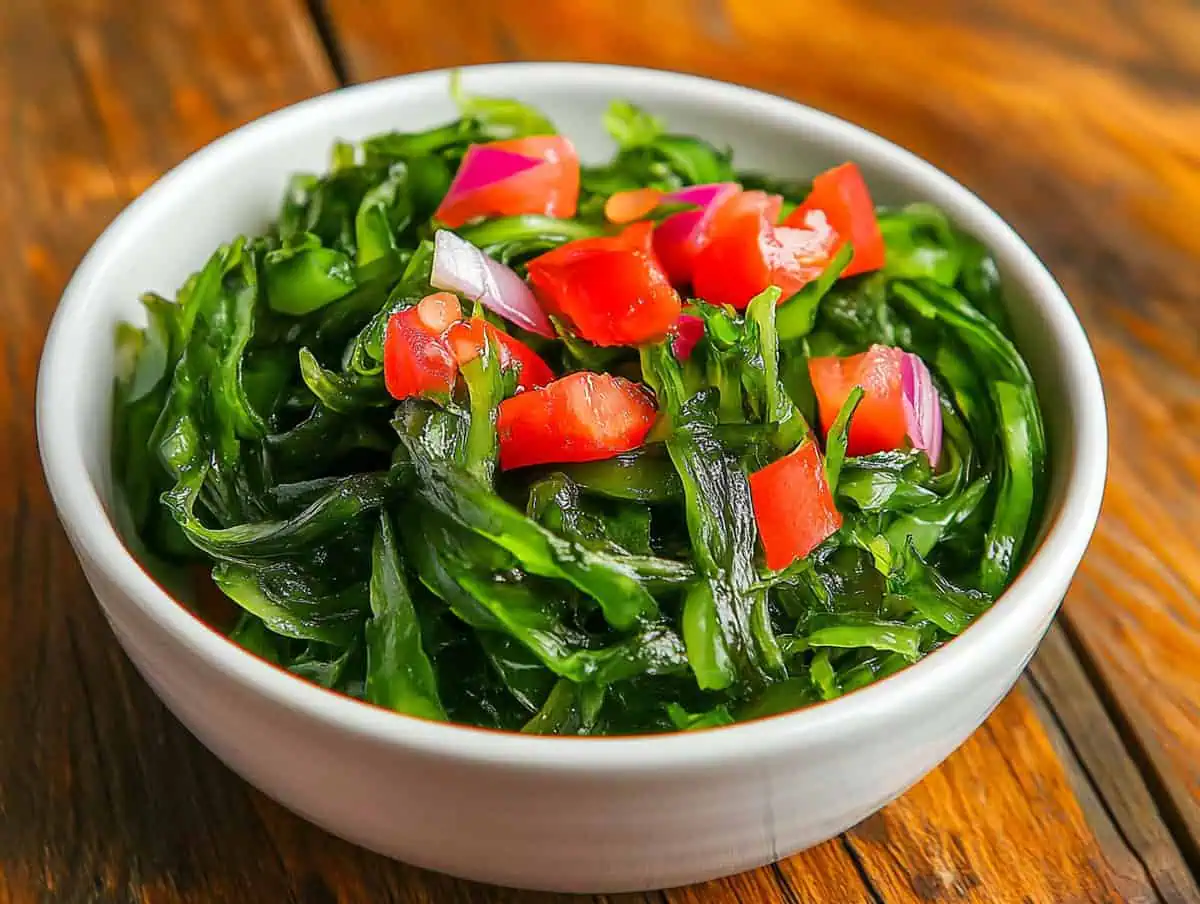






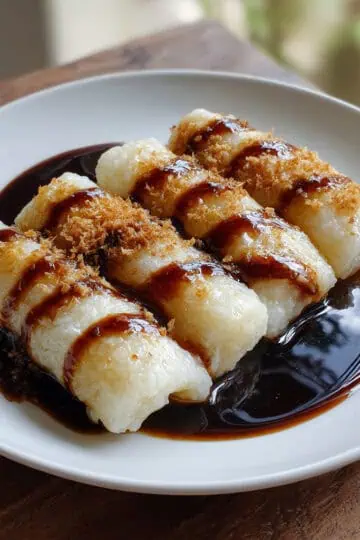


Comments
No Comments